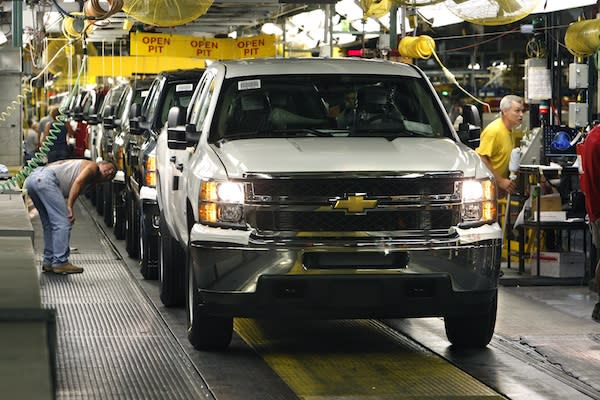 The Lookout
The LookoutJobs scene–and manufacturing prospects–picking up in the Midwest

Soon after taking office in 2009, President Obama was looking for a place to dramatize America's economic woes, and tout his administration's plan to turn things around. He picked Elkhart, Indiana, a struggling city in a state which then placed 42nd out of the 50 states in unemployment rates. Obama could also have picked a location in Michigan, which had a jobless rate of 13.3 percent that year, the highest in the nation. Or perhaps somewhere in Ohio or Illinois, which ranked 40th and 39th respectively.
Those numbers aren't much of a surprise. As a region, the industrial Midwest has become synonymous in the public mind with the loss of manufacturing jobs, and a potent symbol of U.S. economic decline. Since the downturn began in 2008, that impression has only strengthened, especially after the Michigan-based auto industry needed an $86 billion dollar bailout to avert a complete collapse.
So it might come as a shock to learn that over the last year, those four Midwestern states led the pack in reducing their jobless rates. And behind that trend is an emerging body of evidence that supports a much more optimistic view not just of the industrial Midwest region, but of the future of U.S. manufacturing.
Between this March and last, Michigan's jobless rate dropped from 13.3 percent to 10.3 percent, according to Labor Department numbers. That 3 percentage-point decline led the nation. Illinois and Indiana were second and third--with rates that went from 11 percent to 8.8 percent, and 10.6 percent to 8.5 percent, respectively. And Ohio was tied for fourth, with a 1.6 percentage-point drop. Illinois, Indiana, and Ohio now all have jobless rates below the national average of 9 percent.
The revival of the auto industry appears to have had a hand in the success. Recent months have seen a string of announcements from General Motors and Chrysler about new jobs and shifts not just in Michigan but throughout the region--culminating in the news last week that G.M. would invest $2 billion at 18 plants. Even Flint, Mich., which Michael Moore turned into a symbol of the loss of American manufacturing jobs in his 1989 film, "Roger and Me"--is getting in on the action.
Indeed, President Obama is expected to tout the revival as a key part of his 2012 re-election message. Back in November, he previewed that strategy by touring a revived Kokomo, Ind. auto plant, and declaring that the industry is "coming back, we're on the move!"
Signs of a broader manufacturing renaissance may also be boosting the industrial Midwest. As we reported last month, manufacturing grew at more than four times the rate of the economy as a whole in the first three months of this year. And the number of manufacturing jobs, which had long been on the decline, has steadily increased over the last year. As one analyst put it: "The economy would be limping along, at best, without the strong manufacturing sector."
That's likely to continue. A study by a consulting group released last week predicted that the next few years will bring a wave of reinvestment by U.S. manufacturers in domestic production, as rising wages make China less attractive. "The 'Made in the USA' label may be poised for a comeback," declared Reuters.
At least for Michigan, another surprising factor may also be playing a role in the turnaround. According to a recent analysis, the fastest-growing market for tech jobs--the sector that, more than any other, may represent the economy of the future--isn't San Jose, Austin, or North Carolina's Research Triangle. Instead, it's the city that's become our leading icon of industrial decline and urban decay: Detroit.
(A Chevy Silverado receives final inspection at G.M.'s Flint, Mich. plant, June 2010.: Carlos Osorio/AP)
